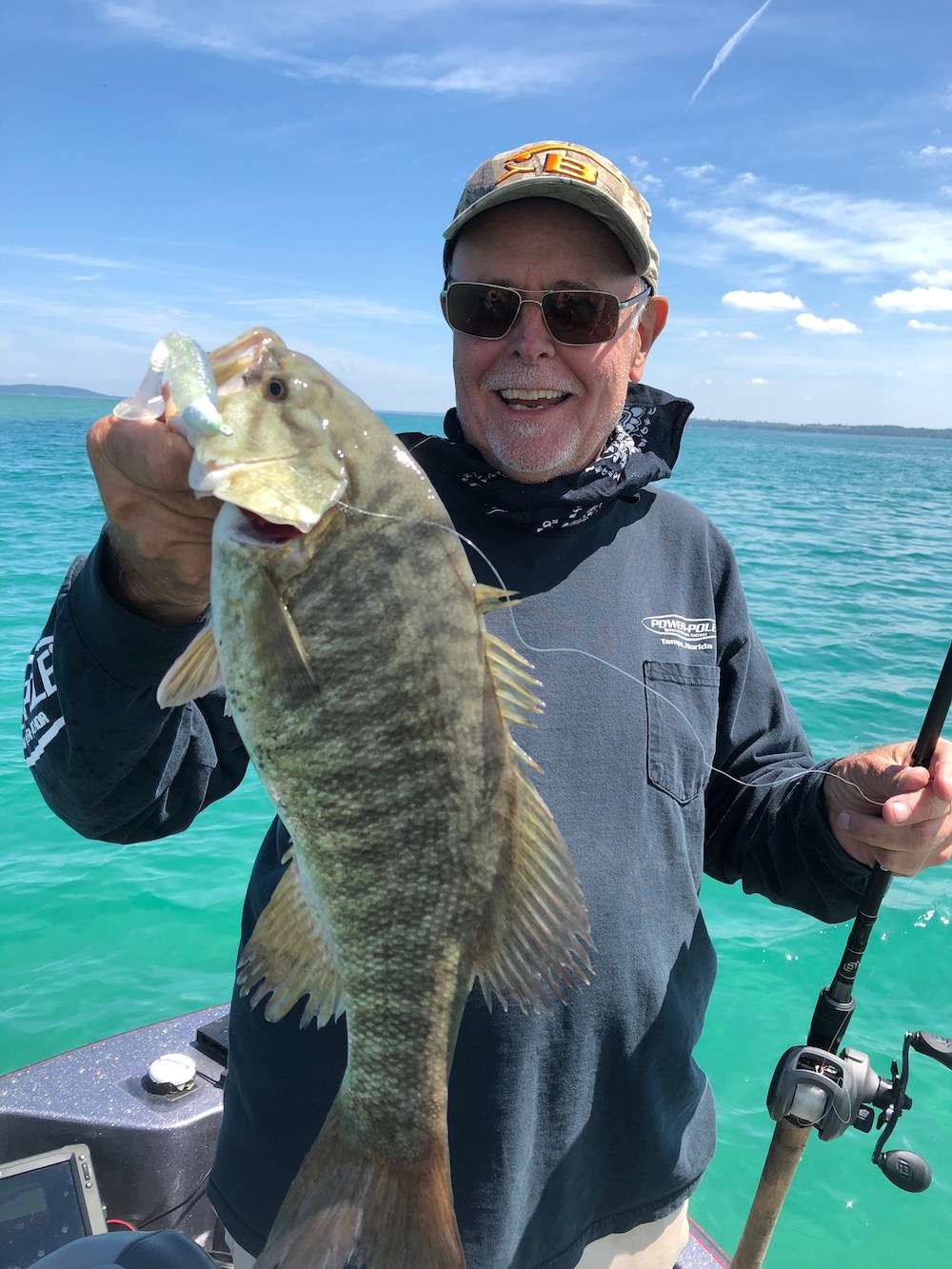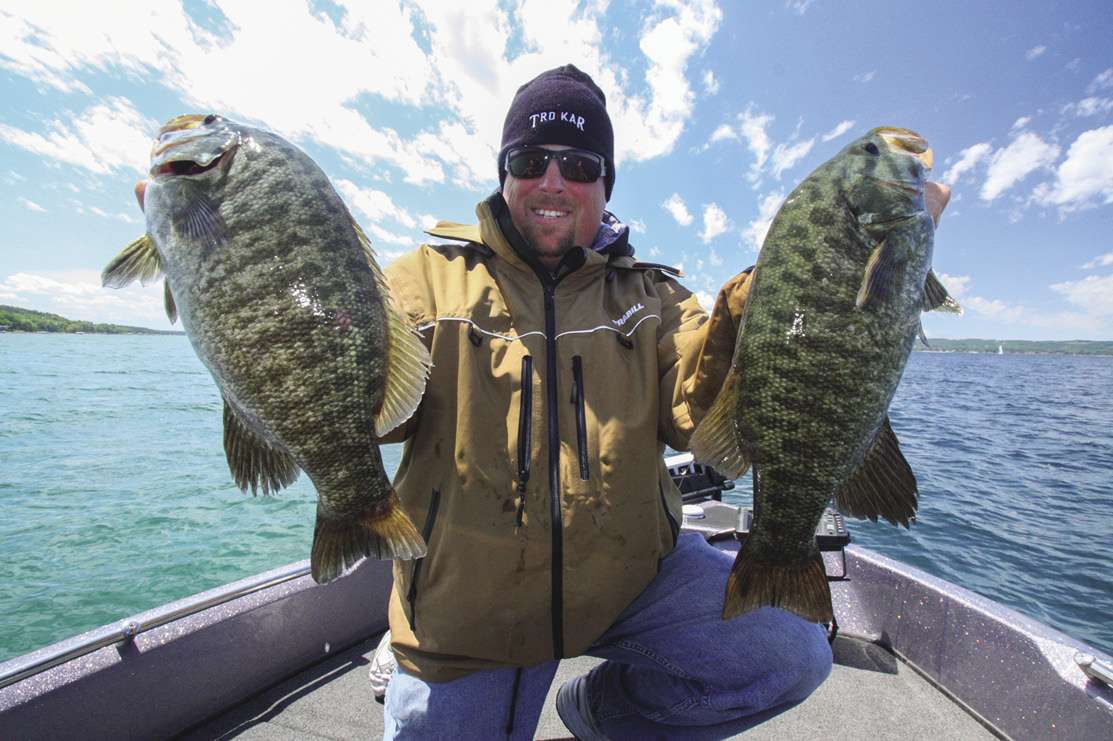
Do you daydream about catching a trophy smallmouth? Turning that vision of boating a slab-sided 7-pounder into reality requires more than luck, and the road to lunker smallmouth heaven is replete with potential dead-end turns. We asked Michigan guide and Bassmaster Northern Opens competitor Chris Noffsinger, one of the nation’s premier trophy smallmouth hunters, to list the eight most grievous errors bass anglers make when gunning for a giant bronzeback — and, because we want you to realize your dream, to explain how to correct each mistake. If you’re really serious about catching a monster smallmouth, you’d be well advised to read and heed what follows.
1. DON’T HAVE A GAME PLAN FOR TARGETING BIG FISH
“If I go fishing often enough, sooner or later I’m bound to catch a big smallmouth!” is the epitome of wishful thinking. Unless you’re incredibly lucky, putting that beast in your boat will take planning and preparation. True, there might be a (as in one) 7-pound smallie swimming in the lake where you catch all those 13-inchers, but your odds of ever hooking it are beyond infinitesimal. Therefore, your first step in developing a successful trophy smallmouth game plan should be determining not only where these superior fish live, but where they live in numbers large enough to warrant spending your precious time and hard-earned bucks to go there. Fortunately, the Internet has made this initial step easy — just Google “trophy smallmouth” plus your state or region for starters. Also, Bassmaster, the ultimate resource for all things bassy, publishes a thoroughly researched annual list of its Top 100 bass lakes, which for 2014 includes such fabled big bronzeback destinations as Lake Michigan, Lake Erie and Pickwick, plus a handful of red-hot trophy smallmouth venues you’ve probably never heard of. Once you’ve pinpointed where the big brown fish are actually coming from, Google the specific lake to learn when and how to fish it and to get contact information for a local guide who specializes in big smallmouth (highly recommended, especially on a huge body of water such as one of the Great Lakes).
2. FOCUS ON FISHING THICK COVER CATCH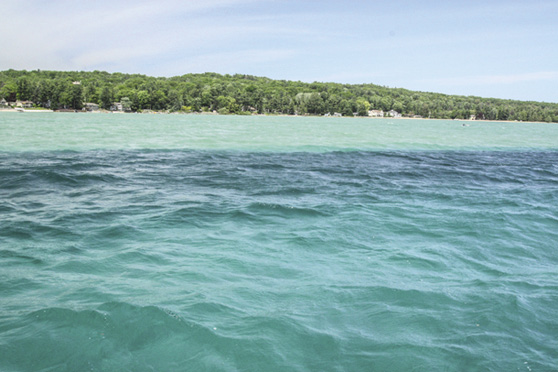
This is one of the “rules” of bass fishing that you need to unlearn if you’re serious about catching a giant smallmouth. While largemouth bass are indeed programmed to favor submerged brushpiles, matted grass, logjams and other forms of dense, gnarly cover, smallmouth bass relate more to a well-defined structural edge — such as a dropoff in a natural lake or a reservoir channel break — and to sparse, isolated pieces of cover, like a little patch of rocks on a sand flat or a lone stump at the end of a reservoir point. Many of the sharp dropoffs where I catch giant Great Lakes smallies have no cover at all; the fish are simply using the darkness of deep water for concealment. So when you embark on your trophy smallmouth dream quest, target structural edges and remember that less is more where cover is concerned.
3. DON’T FISH AT NIGHT
“Too many mosquitoes.” “I gotta be at work at 8 a.m.” “My wife wants me to watch Downton Abbey with her.” I hear ya, bro, but what’s a few bug bites, a sleepless night or some temporary marital discord when you’ve got a great shot at putting a wallhanger smallie in your boat? When the surface temperature of a clear, cavernous Southeastern lake climbs into the mid-90s during July and August, big smallies move deep and go into a stupor. But after dark, they’ll gravitate to shallow gravel and chunk rock banks to gorge on crawfish and will absolutely decimate a jig or short-arm spinnerbait. Here in northern Michigan, prime trophy smallmouth lakes such as Charlevoix and Torch are churned to a froth by pleasure boats during the summer tourist invasion, but I’ll often have the lake to myself after dark, when those big fish move up to feed. A balmy summer night, no Jet Skis buzzing around you and a livewell full of lunker smallies — what’s not to like about that?
4. DON’T LEAVE A BIG SCHOOL OF SMALL FISH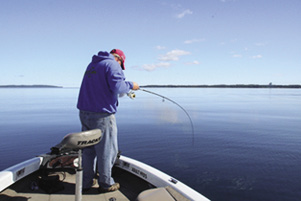 Talk about exciting: You’ve happened upon a mother lode of smallies and are catching 1- to 2-pounders on nearly every cast! Sounds like tons of fun, but if it’s late summer or fall, I’d strongly recommend leaving these fish, because you’re unlikely to catch a trophy-size smallie out of this school! I’ve found that during the summer/fall transition, smallies will school by size and suspend around offshore baitfish schools — sometimes at extreme depths (see No. 8). Now the name of the game becomes locating a school of lunkers with your electronics; they’ll invariably be lurking around big clouds of baitfish, often near a sharp dropoff, an offshore reef or a submerged hump. So don’t let that pack of hyperactive dinks distract you. Tell ’em “adios” — you’ve got bigger fish to fry.
Talk about exciting: You’ve happened upon a mother lode of smallies and are catching 1- to 2-pounders on nearly every cast! Sounds like tons of fun, but if it’s late summer or fall, I’d strongly recommend leaving these fish, because you’re unlikely to catch a trophy-size smallie out of this school! I’ve found that during the summer/fall transition, smallies will school by size and suspend around offshore baitfish schools — sometimes at extreme depths (see No. 8). Now the name of the game becomes locating a school of lunkers with your electronics; they’ll invariably be lurking around big clouds of baitfish, often near a sharp dropoff, an offshore reef or a submerged hump. So don’t let that pack of hyperactive dinks distract you. Tell ’em “adios” — you’ve got bigger fish to fry.
5. AVOID CURRENT
Most bass fishermen find moving water a drag to fish. Besides making boat control tedious, current pulls your lure presentations off their mark and creates a bow in your line that makes light bites hard to detect. But smallmouth, much more than largemouth, are completely comfortable in current — and if you want to catch a big one, you should be, too! Instead of being scattered across a wide area, big smallies will stack up and position themselves in predictable places where moving water is present — in swirling eddies, behind midstream boulders and in flooded trees — and use current like a conveyor belt to deliver groceries to their downstream lairs. On river-run smallmouth reservoirs such as Pickwick Lake, the vast majority of the trophy-class fish caught annually are bagged while a healthy flow of water is being generated from the upstream dam, and the big fish bite can literally shut off like a switch the instant generation ceases. Even so-called slackwater lakes may exhibit significant water movement. I’ve fished in current on Lake Michigan that was strong enough to roll a 1-ounce sinker along the bottom like a marble, and high winds can create considerable current in neck-down areas of smaller bodies of water. When fishing fast water, use compact lures such as jigs and tubes that sink into the strike zone quickly, and hang on to your rod — a monster smallie hooked in swift current will pull like a freight train!
6. BE A FAIR-WEATHER FISHERMAN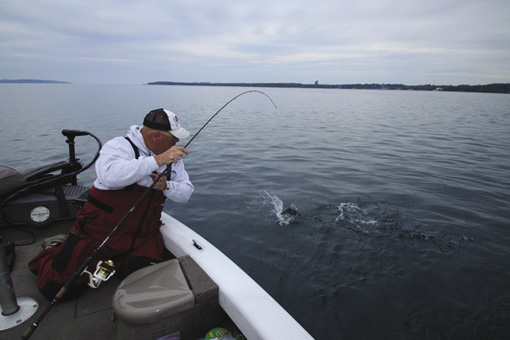 When your alarm sounds at 4 a.m. and it’s raining, sleeting or blowing 40 mph outside, it’s mighty tempting to roll over and go back to sleep instead of heading for the lake. But big smallmouth love rough weather — the nastier, the better! In clear lakes, wind and wave action set up predictable food chain scenarios. Drifting plankton blooms are concentrated and blown toward shore, causing schools of threadfin shad or alewives to follow this food source into shallower water — and smallmouth to move from open water to gorge on the baitfish. Waves crashing against the bank and runoff from heavy rains will muddy the shallows, prompting smallies to move tight to shore to feed on crawfish. Here in northern Michigan, early prespawn and late fall smallies will stack up at the bottom of sharp dropoffs; they’ll slam a blade bait with a vengeance, even though lake water is barely 40 degrees and the air temp might be in the teens. Sure, it’s cold, wet and miserable out there, but it’s amazing how fast a 7-pound smallie will warm you up!
When your alarm sounds at 4 a.m. and it’s raining, sleeting or blowing 40 mph outside, it’s mighty tempting to roll over and go back to sleep instead of heading for the lake. But big smallmouth love rough weather — the nastier, the better! In clear lakes, wind and wave action set up predictable food chain scenarios. Drifting plankton blooms are concentrated and blown toward shore, causing schools of threadfin shad or alewives to follow this food source into shallower water — and smallmouth to move from open water to gorge on the baitfish. Waves crashing against the bank and runoff from heavy rains will muddy the shallows, prompting smallies to move tight to shore to feed on crawfish. Here in northern Michigan, early prespawn and late fall smallies will stack up at the bottom of sharp dropoffs; they’ll slam a blade bait with a vengeance, even though lake water is barely 40 degrees and the air temp might be in the teens. Sure, it’s cold, wet and miserable out there, but it’s amazing how fast a 7-pound smallie will warm you up!
7. DON’T THROW TOPWATER LURES
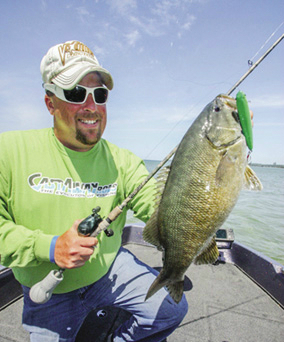 Jerkbaits? Check. Tubes? Check. Drop shot baits? Check. Topwaters? Dude, looks like you’ve left surface lures out of your smallmouth tacklebox! You might want to rethink this decision, because giant smallies will absolutely plaster a Zara Spook, Tiny Torpedo, Pop-R and a host of other noisy topwater plugs. I’ve caught scores of monsters on top during postspawn and fall, when big fish are ambushing baitfish on points, channel drops, submerged rockpiles and other key structures. Even in gin-clear water, big smallies have a thing about brightly colored topwaters, so be sure to include hot colors such as yellow and chartreuse in your lure arsenal, and try dressing up your poppers with a gaudy feathered treble hook on the butt end.
Jerkbaits? Check. Tubes? Check. Drop shot baits? Check. Topwaters? Dude, looks like you’ve left surface lures out of your smallmouth tacklebox! You might want to rethink this decision, because giant smallies will absolutely plaster a Zara Spook, Tiny Torpedo, Pop-R and a host of other noisy topwater plugs. I’ve caught scores of monsters on top during postspawn and fall, when big fish are ambushing baitfish on points, channel drops, submerged rockpiles and other key structures. Even in gin-clear water, big smallies have a thing about brightly colored topwaters, so be sure to include hot colors such as yellow and chartreuse in your lure arsenal, and try dressing up your poppers with a gaudy feathered treble hook on the butt end.
8. USE ONLY SMALL LURES
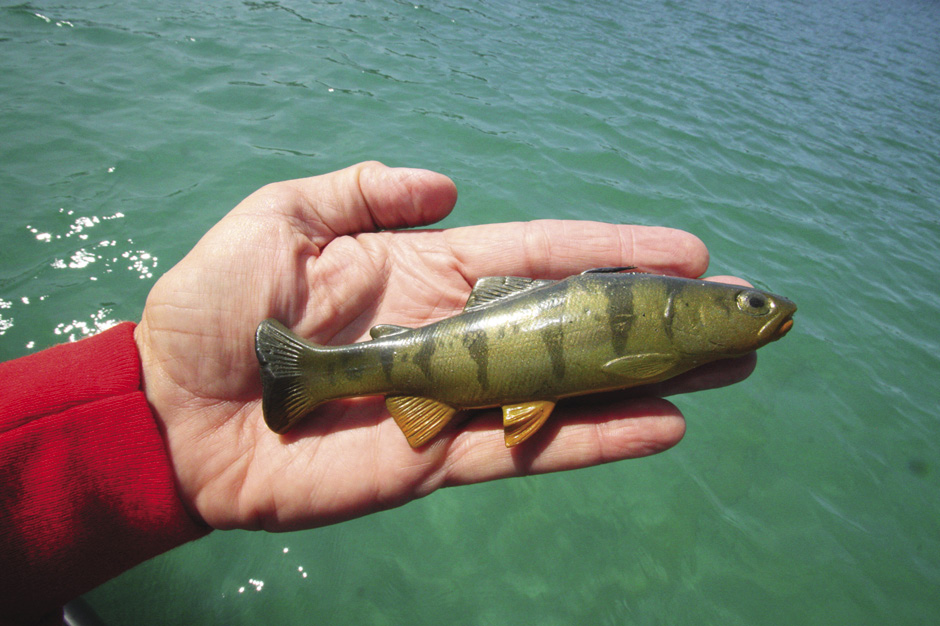
Sure, you’ll catch plenty of smallies on 4-inch tubes and itty-bitty drop shot lures, but don’t let its name mislead you — a smallmouth bass will strike a big bait! I routinely catch wallhangers on bulky 3/4- and 1-ounce spinnerbaits with oversize tandem willow blades, big swimbaits and mango-size goby imitators. And if you think those lures are big, a buddy who fishes for muskies reports catching smallies weighing upwards of 8 pounds on foot-long trolling plugs and huge bucktail spinners! So don’t be that guy who shows up in trophy smallmouth country armed only with 1/16-ounce jigs and 4-pound test. Keep at least one rod rigged with a big spinnerbait or swimbait to satisfy the hunger of those behemoth bronzebacks that are hankering for a full-meal deal!


